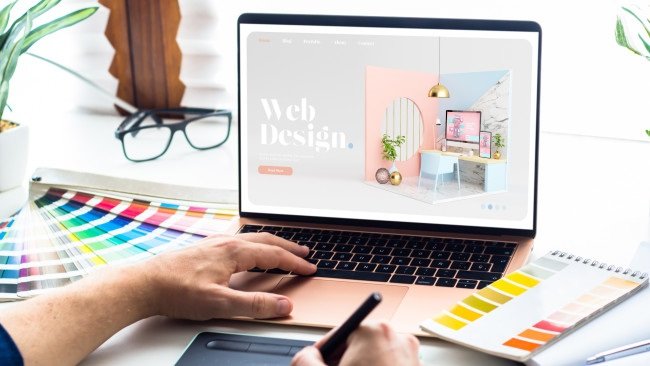In the digital universe, websites are the front doors to brands, businesses, and personalities. And just as the world outside is constantly changing, so are the expectations and trends in web design—especially in platforms like WordPress, where innovation happens at breakneck speed. For new web designers, WordPress veterans, and small business owners looking to make a mark online, here is a deep dive into the trends and cutting-edge innovations that are shaping WordPress website design now and into the future.
Why Staying Updated on Trends Is Crucial In Web Design
An aesthetically pleasing website is not the end goal; it’s the user experience that truly defines a successful design. By keeping up with the latest trends, you’re ensuring your website meets the evolving needs of your audience, in terms of navigation, interactivity, and responsiveness. Additionally, search engine algorithms favor websites that are responsive to the latest user habits and are more likely to rank them higher. With all these factors in mind, it’s clear why staying on top of web design trends is imperative.
Trends in WordPress Website Design
Responsive Design
Gone are the days when browsing the internet meant sitting in front of a computer. Today, users hop between smartphones, tablets, and desktops seamlessly. Responsive design has become a non-negotiable feature. WordPress themes are now prioritizing fluid grid layouts, flexible images, and media queries to automatically adjust to the screen size and device of the visitor.
Dark Mode
Originally popularized by social media platforms and mobile apps, dark mode is making its way to the web. It’s especially useful for reducing eye strain in low-light environments and can offer a sleek, modern aesthetic to your website. WordPress is seeing a surge in dark mode compatible themes and plugins, giving designers more options to play with.
Voice Search Optimization
The rise of smart assistants like Alexa and Google Home has given voice search a prominent role in web design. Websites need to be optimized not just for text-based queries, but for natural language and spoken searches. This means incorporating conversational keywords, deep semantic relevance, and a focus on providing quick answers to common queries.
Innovations Shaping the Future
Web design is not just about aesthetics; it’s a blend of art and technology that constantly pushes for new ways to engage and delight users. Here are some of the game-changing innovations setting the pace for the future of WordPress website design.
AI-Powered Design Tools
Artificial Intelligence (AI) is increasingly being used in web design to automate complex tasks. AI tools can analyze user data to suggest design changes that will likely improve engagement, or even create designs from scratch based on user requirements. In WordPress, AI is seen in plugins that offer predictive content, image recognition, and layout recommendations.
Virtual Reality Integration
While still in its nascent stages, virtual reality (VR) has the potential to revolutionize website design by providing immersive experiences. With the help of VR plugins, WordPress users can already create 360-degree product views, virtual tours, and interactive showcases, opening up new possibilities for businesses to engage their audience in 3D spaces.
Blockchain Security Features
The rise of cybersecurity threats has pushed website owners to seek more robust security measures. Blockchain technology is now being explored for its potential to create tamper-proof records of online activity, offering enhanced security for financial transactions, user data, and content distribution. In WordPress, blockchain integration is still in its early stages, but the discussion around its potential is growing louder.
Impacts on User Experience
The resulting impact on user experience due to these trends and innovations is nothing short of a paradigm shift. Websites not only look better but also perform smarter, helping to forge stronger connections with visitors and converting them into customers more effectively.
Improved Performance
Websites built on the latest WordPress themes and using advanced design techniques often lead to faster load times, smoother navigation, and more reliable performance. Users have little patience for slow websites, making performance optimization a critical factor in user experience and SEO.
Enhanced Accessibility
Web design trends are also closely aligned with making the web more accessible to all users, regardless of disability. WordPress is committed to accessibility, with an increasing number of themes and plugins designed to ensure that websites are perceivable, operable, and understandable for everyone.
Implementing Trends in Practice
With all these trends and innovations in mind, how can you as a web designer or business owner implement them to create a standout WordPress website? Here are some practical steps to take.
Tools and Resources
Stay on top of the latest WordPress themes and plugins that incorporate the trends you’re interested in. Explore design galleries, read blogs, and participate in web design forums to discover new tools and resources.
Best Practices for Integration
Each trend should be integrated thoughtfully, considering your specific audience and the overall purpose of your website. Don’t just follow a trend for the sake of it; ensure it genuinely enhances the user experience and serves your business goals.
Case Studies of Successful Implementations
Learn from the best. Look for case studies of websites that have successfully integrated these trends and innovations. Analyze their approach and see how you can adapt similar strategies to your own site.
Conclusion
Website design, especially within the WordPress ecosystem, is a dynamic and constantly evolving field. Staying ahead of the curve by adopting the latest trends and innovations is what sets exceptional websites apart from the rest. Continuous learning and adaptation are not just good practices but are crucial to success in the digital space. Web designers and small business owners alike should treat their websites as living, breathing entities that need to grow and evolve alongside their users and the technology that enables them. Keep learning, keep experimenting, and keep pushing the boundaries of what is possible in WordPress website design.

